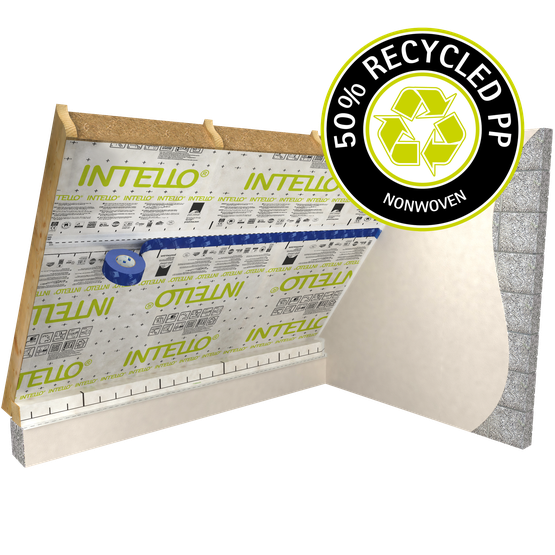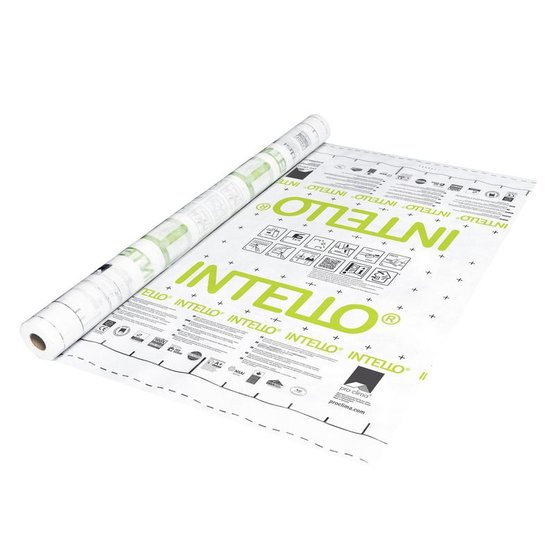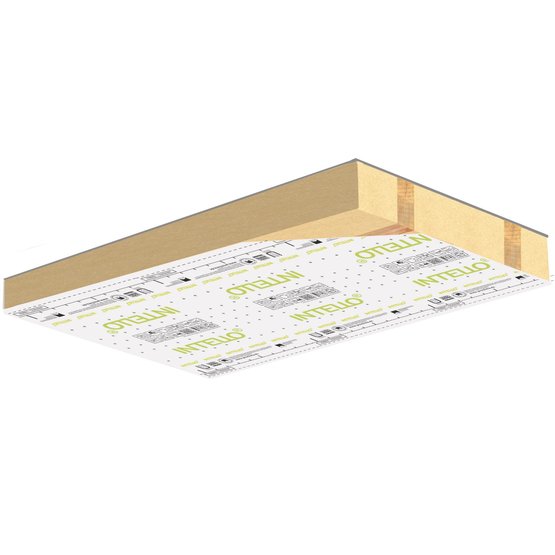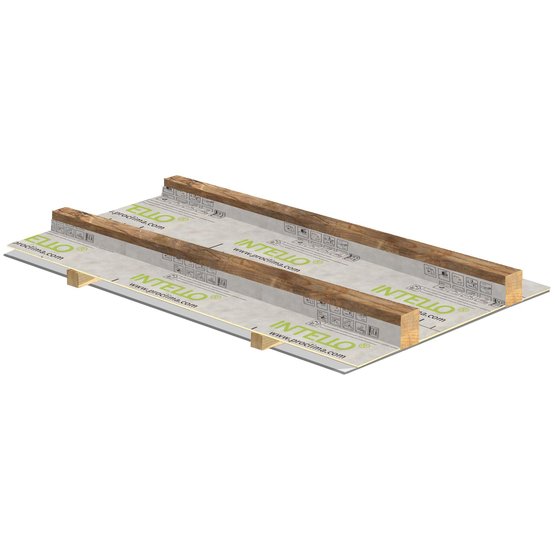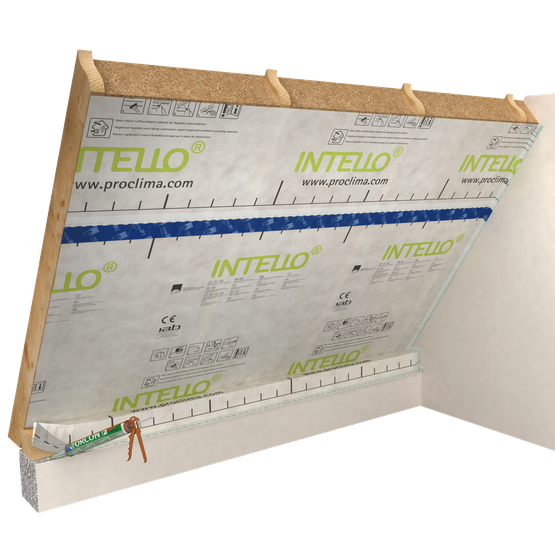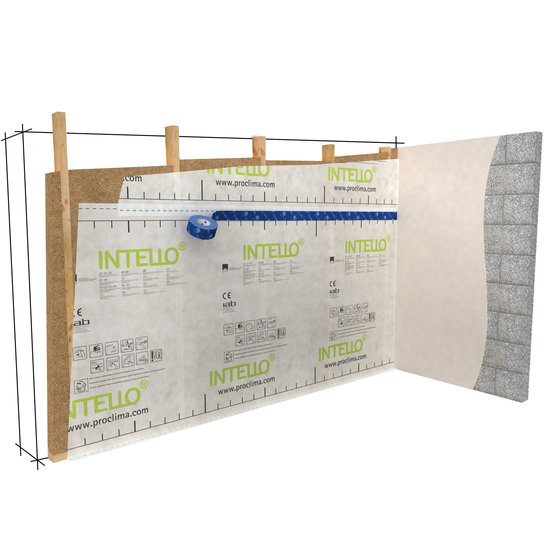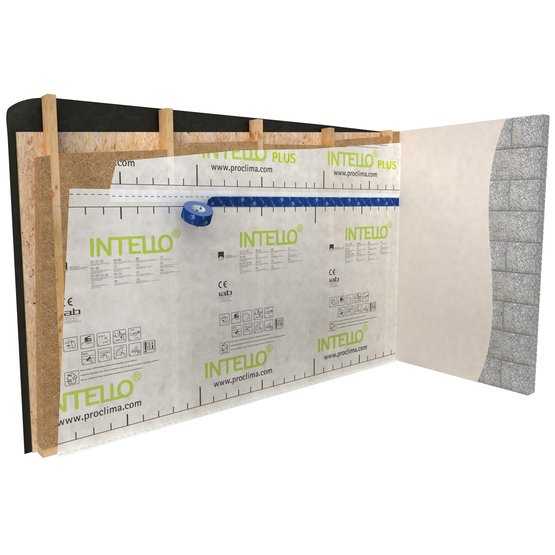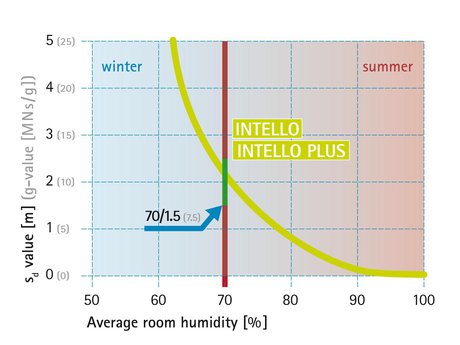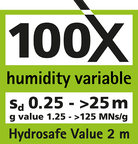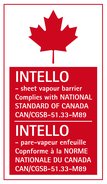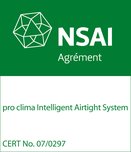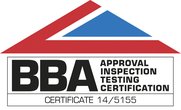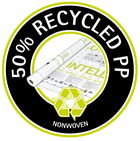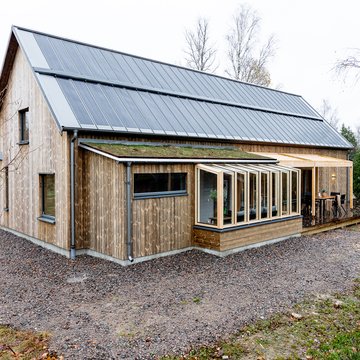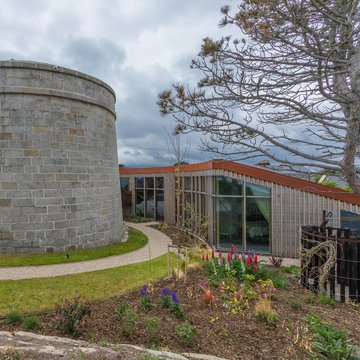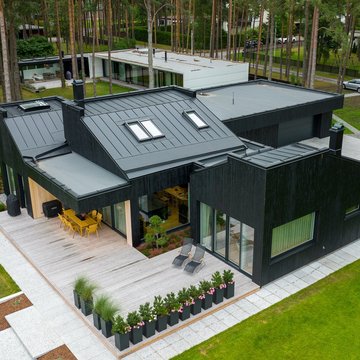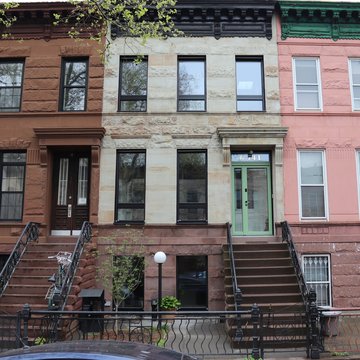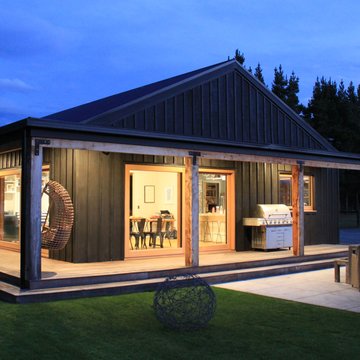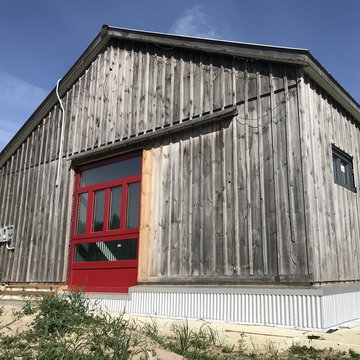Hydrosafe® high-performance vapour control membrane, suitable for all fibrous insulation mats and boards
Advantages
- Best possible protection against moisture damage to structures and mould because this product is humidity-variable with a variation of a factor of over 100
- Long-term protection: performance tested and certified by independent testing authority (ETA-18/1146)
- Protected winter building sites thanks to hydrosafe® behaviour
- Can be combined with all fibrous insulation mats and boards
- Easy to work with: dimensionally stable, no splitting or tear propagation
- Excellent values in hazardous substance testing, has been tested according to the ISO 16000 evaluation scheme
Areas of application
Vapour control (alternate terms: vapour check or retarder) membrane for use on roofs, walls, ceilings and floors on structures that are open or closed to diffusion on the exterior, e.g. flat/pitched roofs and green roofs, after appropriate design calculations have been carried out.
Planning and construction guidelines
Areas of application
The INTELLO and INTELLO PLUS vapour control (alternate terms: vapour check or retarder) and airtight membrane can be used as an inner boundary for thermal insulation:
- On roofs, walls, ceilings, and floors
- On residential and commercial buildings with temporary increased levels of humidity
- On residential buildings or buildings with residential-like use in all rooms such as living rooms and bedrooms, kitchens and bathrooms
- On structures that are open to diffusion on the exterior and those that are closed to diffusion on the exterior, and
- In the case of demanding requirements relating to indoor air quality
Applications on complex or demanding structures
Compared to other products on the global marketplace, the INTELLO system also provides excellent protection against moisture damage to structures – even for locations with very cold climates – for critical structures that are closed to diffusion on the exterior, such as pitched roofs with metal coverings, roofing underlays with asphalt roof membranes, flat roofs and green roofs etc.
Detailed information on the physics of thermal insulation is available in the study on “Calculating potential freedom from structural damage of thermal insulation structure in timber-built systems”.
Use of fibrous insulation materials
The high degree of protection against moisture damage to structures offered by humidity-variable vapour control membranes is achieved by using fibrous thermal insulation materials that are open to diffusion, as the moisture must be able to diffuse through to the vapour control membrane for the purpose of drying during the summer climate.
Fibrous thermal insulation materials such as cellulose, flax, hemp, wood fibre and rock or mineral wool are ideal here.
Can also be used for diffusion-impermeable roofing underlays
The INTELLO system can be used with all commonly available diffusion-permeable underlays and diffusion-impermeable roofing underlays. Underlays made of wood fibreboards are advantageous from an energy viewpoint.
In certain cases, structures must fulfil the requirements for exemption from proof of performance in the relevant standard with regard to moisture protection or must be measured using a suitable calculation method (e.g. time-dependent calculation methods).
Use of diffusion-open interior cladding
To take full advantage of the potential of humidity-variable vapour control membranes to provide protection against moisture damage to structures, diffusion-open cladding should be installed internally, over the vapour control membrane – e.g. gypsum boards or wooden board cladding. Diffusion-inhibiting layers such as OSB or multi-layer wooden panels hinder drying out to the inside in summer.
Correct work process provides protection against condensation
The ideal time for installation is two weeks after the adjacent walls have been plastered. Check the moisture content of the wooden structure before insulating and sealing. Alternatively, installation is also possible before plastering is carried out.
To avoid condensation formation, the vapour control and airtightness layer should then be completed immediately after the installation of mat or panel-shaped insulation materials. Blown-in insulation should be inserted immediately after airtight sticking of the membrane. If necessary, carry out this work gradually in steps. This applies particularly to work carried out in winter. Ventilate any increased relative humidity quickly and systematically.
Note for DIY enthusiasts
Install the vapour control membrane at the same time as the thermal insulation. If the thermal insulation is left without a vapour control for a long period in winter, there is a risk of condensation formation.
Moisture due to normal use
The diffusion resistance of INTELLO has been chosen to ensure that there is a reliable vapour-controlling effect even in the case of high indoor humidity, which can occur in new buildings as a result of construction work or during short-term increases in relative humidity in bathrooms or kitchens, for example.
As a rule, moisture due to construction work must be able to escape the building quickly by ventilation through open windows. Dehumidifiers can help to speed up the drying process in wintertime. This helps to avoid permanently high levels of relative humidity.
Construction phase: hydrosafe® value (70/1.5 rule)
A vapour control membrane should have a hydrosafe® value of 1.5 m (g value: 7.5 MN·s/g ; 2.2 US perms) in order to protect structures against dampness even in the case of the increased relative humidity that can be present during construction work.
The hydrosafe® value specifies how well sealed a humidity-variable vapour control membrane still is at an average humidity of 70%. Average humidity of 70% will be present if there is 90% indoor air humidity and 50% humidity in the space between the rafters, for example; this level of indoor air humidity can occur when installing screed or plastering walls. The requirement that sd should be > 1.5 m (g value: 7.5 MN·s/g ; 2.2 US perms) and < 2.5 m (g value: 12.5 MN·s/g ; 1.3 US perms) comes from the German wood preservation standard and is described in further detail by the 70/1.5 rule. INTELLO fulfils these requirements reliably.
Quality assurance
Airtightness is the critical factor in protecting the thermal insulation structure against moisture damage. pro clima recommends that the airtightness layer should be checked for leaks and that any leaks should be located and rectified using a blower door test, for example.
Proof of durability
There is currently no standard that contains a validation procedure for testing the behaviour and durability of humidity-variable properties. Only vapour control membranes with constant diffusion resistances can be tested in accordance with European standards (EN 13984), for example. For this reason, the durability of the humidity-variable behaviour of INTELLO and INTELLO PLUS has been demonstrated according to a procedure specified by an independent committee of experts of the German Institute of Construction Engineering (DIBt).
As part of this testing, the two vapour control membranes were subjected to accelerated ageing with significantly more demanding conditions (increased temperature and doubled ageing period) as compared with EN 13984. In addition, the permitted deviations of the aged diffusion resistances from the non-aged diffusion resistances have been made significantly more demanding in this evaluation as compared to the European standard.
With the European Technical Assessment (ETA-18/1146), INTELLO and INTELLO PLUS have proof of the durability of the humidity-variable properties.
Technical support
If you have questions on applications, please contact our Technical Support.
Building projects with INTELLO and INTELLO PLUS
A success story that really rocks!
Although not taken seriously by many when it was first launched, the INTELLO vapour check membrane with humidity-variable diffusion resistance revolutionised construction practice back in the early 2000s. Since then, it has come a long way: an established part of best building practice, the first humidity-variable vapour check membrane with an ETA, certified as fulfilling Passive House standards, and with excellent results in hazardous substance testing. 20 years on from its market launch, it has been fitted on countless projects – ranging from tiny houses right through to multi-storey buildings – on ceilings, roofs and walls to ensure the integrity of the airtightness layer.


